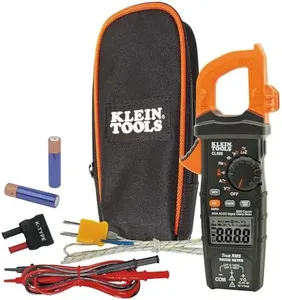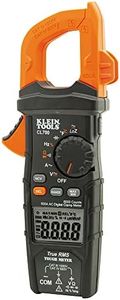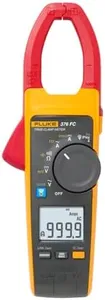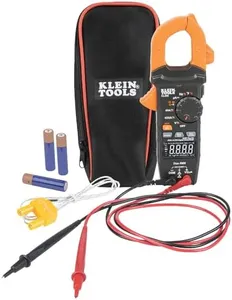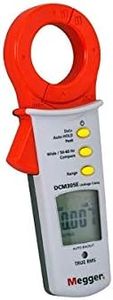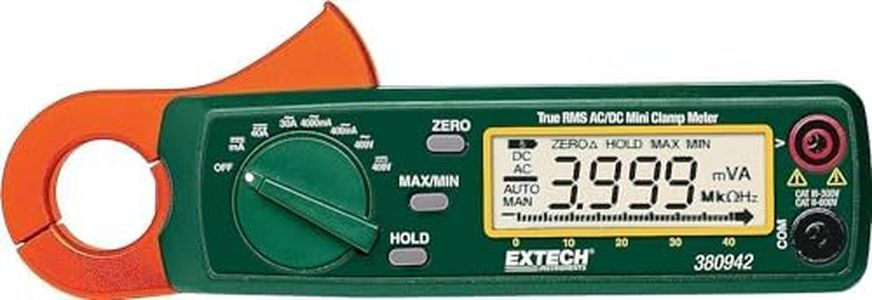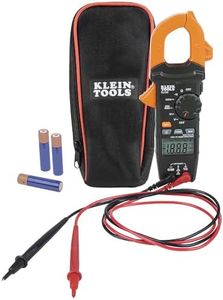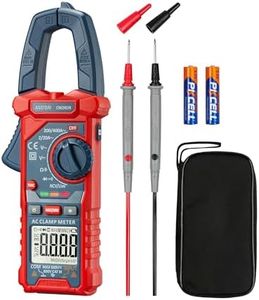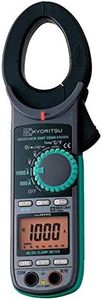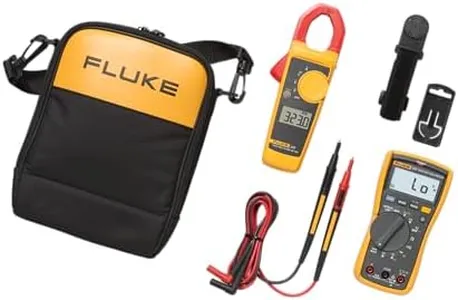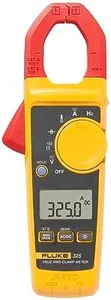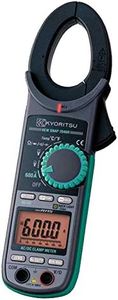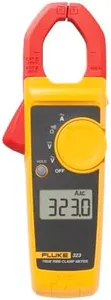We Use CookiesWe use cookies to enhance the security, performance,
functionality and for analytical and promotional activities. By continuing to browse this site you
are agreeing to our privacy policy
10 Best Clamp Meters
From leading brands and best sellers available on the web.Buying Guide for the Best Clamp Meters
Choosing a clamp meter can seem complicated at first, but with a clear understanding of what each specification means, you can confidently pick a model that matches your needs. Clamp meters are essential tools for safely measuring electrical currents, mainly without having to disconnect wires. Whether you're an electrician, a hobbyist, or just need one for occasional troubleshooting, focusing on the right features ensures you get a device that's accurate, user-friendly, and safe for your purposes.Current Measurement RangeThis specification tells you the minimum and maximum current (amperage) the clamp meter can measure. It's important because using a meter outside of its specified range can either damage the device or give you inaccurate readings. Most household and light industrial uses fall under lower ranges (up to 400A), while heavy-duty or commercial applications might require higher ranges (up to 1000A or more). To choose the right range, consider the highest current you typically need to measure; selecting a meter that covers slightly above your usual maximum keeps you safe and your measurements accurate.
Type of Current (AC/DC)Clamp meters can be designed to measure only AC current, or both AC and DC current. This is crucial because not all electrical systems use the same type of current. AC (alternating current) is common in home and building wiring, while DC (direct current) is found in batteries, solar panels, or automotive systems. If you only plan to work with standard residential electrical systems, an AC-only meter might be sufficient. If you need versatility to handle automotive or renewable energy projects too, make sure your clamp meter can measure both AC and DC currents.
Voltage MeasurementMany clamp meters also allow you to measure voltage, both AC and sometimes DC. This feature is important if you need to diagnose electrical faults beyond just current measurements. Voltage capability is usually indicated as a maximum allowable voltage. For most users, having a meter that can measure up to 600V is enough for residential and general industrial tasks. If you foresee working on higher voltage applications, verify the meter's maximum voltage rating.
Jaw Opening SizeThe jaw opening determines the maximum size of cable the clamp can fit around. If you work in environments with large cables or bundled conductors, a wider jaw is necessary. For typical household wiring, a smaller opening is usually sufficient. Always check the thickness of the wires or cables you expect to measure and ensure your clamp meter’s jaw is wide enough to fit over them safely.
Display FeaturesClamp meters often come with digital displays, but some have additional features like backlighting, large digits, or analog bar graphs. A clear, easy-to-read display is vital, especially in low-light or awkward spaces. If you often work in dim conditions or need to see readings quickly at a glance, look for meters with backlit displays and larger numbers.
Additional Measurement FunctionsSome clamp meters can also measure resistance, continuity, frequency, temperature, and more. These features add versatility, letting you perform a wider range of diagnostic tasks without extra instruments. Think about your typical projects: if you mainly need current or voltage, you might not need extra features. But if you often check components, wiring integrity, or work in complex systems, having more built-in functions can save time and space in your toolkit.
Safety Ratings (CAT Ratings)Electrical measurement tools come with safety category (CAT) ratings that certify their use in different environments, such as CAT II for household appliances, CAT III for distribution-level wiring, and CAT IV for outdoor or utility connections. These ratings are crucial for your safety, indicating the environments and voltage levels where the meter can be used without risk. Pick a meter with a rating that matches or exceeds the highest-risk environment you expect to work in, to ensure your safety in all scenarios.
